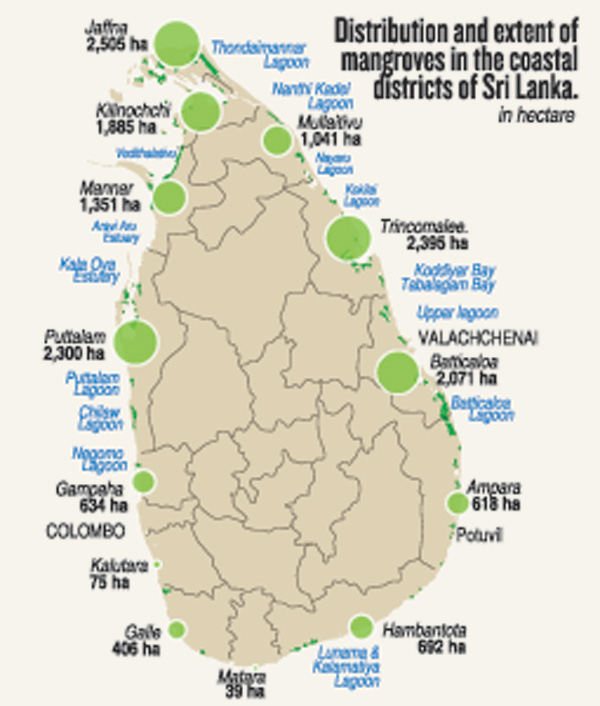News
Unsung eco-warrior gains long-due protection
A hugely underrated eco-warrior is only now gaining national protection with the first steps being taken to safeguard existing mangrove forests and reclaim lost growth. 
Forest Officer Devanee Jayathilaka’s courageous stance in protecting a mangrove patch in the Negombo lagoon has brought welcome media attention to the issue, speakers at this week’s National Workshop on Community-Based Coastal and Marine Ecosystem Restoration said, revealing crucial first steps to protect Sri Lanka’s mangroves.
Mangroves absorb more atmospheric carbon than other trees, making them a critical asset in the fight against global warming.
“The 2004 tsunami was an eye-opener about the importance of mangroves, which protect coastal areas from sea surges by absorbing the raging power of the waves,” Mala Amarasinghe of the Kelaniya University’s Botany Department said. “There were many reports of mangroves protecting villages from the tsunami.
“Mangroves are full of life because they also attract other biodiversity. They are good breeding grounds for fish because their root system provides perfect protection for small fish from predators.”
The Mangrove Task Force approved by Cabinet on January 20 has produced a Mangrove Conservation Policy, the head of the Environment Ministry’s Biodiversity Secretariat, Padma Abeykoon, told the conference, organised by Sri Lankan Youth Climate Action Network Trust.
Gaining approval for the policy was an important milestone, Dr. Sevvandi Jayakody of the University of Wayamba said, explaining that mangroves are seen as areas to be “developed” rather than conserved.
Another problem was that mangroves are considered nobody’s baby as mangrove patches in different parts of the country came under different agencies.
The Forest Department is now working to get the mangroves under its network of protected areas, the department’s Deputy Conservator, Nishantha Edirisinghe, said.
He said 76 mangrove patches were declared forest reserves in 2019, with plans to include 12 more this year.
“Sri Lanka set a mangrove restoration target of 10,000ha by 2030. We have already initiated this programme and started a pilot project attempting to restore a few plots of abandoned shrimp farms that were previously mangrove lands,” Mr. Edirisinghe said.
Research in 2017 found that about 1,000-1,200ha of mangroves across 23 project sites have been under restoration.
Dismayingly, the failure rate is huge: only 200-220ha showed successful restoration; nine out of 23 project sites had no surviving plants. Only three sites – Kalpitiya, Pambala, and Negombo – showed a level of survival higher than 50 per cent.
Fresh threats to mangroves were revealed by environmental lawyer Jagath Gunawardane when he informed the conference about renewed attempts to gain approval for a shrimp farm in Wedithalathivu, in Mannar, which harbours one of the country’s largest mangrove forests and was declared a Nature Reserve in 2016.
Just a year after being declared a protected area, the National Aquaculture Development Authority proposed that a 1,000ha industrial park for farming fish, crabs and exotic shrimp species be established there, involving a fishery with a history of failures across Asia, and a record of widespread destruction of mangroves. That plan is now being pushed again. Mr. Gunawardane said.

